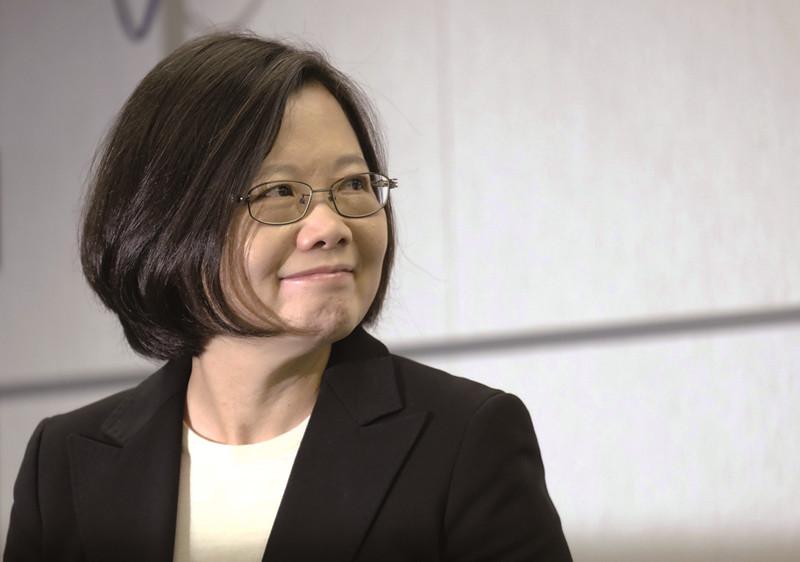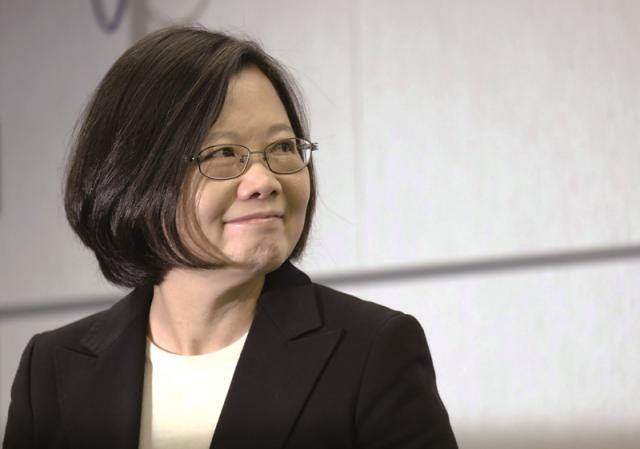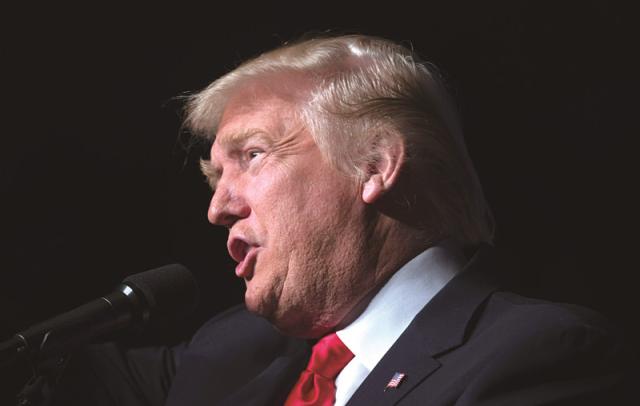Since the US President-elect Donald Trump broke decades-long protocol to have a direct telephone conversation with Taiwanese leader Tsai Ing-wen in early December 2016, the relationship across the Taiwan Strait has been constantly in the international spotlight.
In recent months, cross-Strait tensions have been building since Tsai Ing-wen, leader of the pro-independence Democratic Progressive Party (DPP), was sworn in as leader of the island in May last year. As Tsai broke from the approach of the previous administration under Ma Ying-jeou by avoiding any mention of the “One China” doctrine, a principle Beijing takes as the “political foundation” of the cross-Strait relationship, Beijing has been gradually increasing its political and economic pressure on the island, which it considers a breakaway province.
Since it sees the Taiwan issue as its “core interest” and a matter of territorial integrity, China is furious about Trump’s breaking of decades of the US’s conduct regarding the issue. Although the White House has repeatedly stressed the US still adheres to the One China principle, the fact that Obama signed into law the annual defense bill for 2017, which for the first time advises the Pentagon to “conduct a program of senior military exchanges” on an annual basis with Taiwan has led to serious concerns that the US may further strengthen its military ties with the island in the coming years.
As Tsai embarked on a trip to Central America in January, which involved two stopovers in the US, that tension has rapidly heightened across the Taiwan Strait.
On December 25, China’s first aircraft carrier, the Liaoning, escorted by three guided missile destroyers and two frigates, sailed into the West Pacific through the international waters between Japan’s Okinawa and Miyakojima islands. The fleet then sailed around its east coast and passed 90 nautical miles (176km) from the southern tip of Taiwan before entering the South China Sea and returning to a naval base on China’s Hainan island.
With the voyage needling Tokyo and Taipei, which had scrambled both military aircraft in response, it is believed that this is the first time that the Chinese aircraft carrier has sailed beyond the “first island chain,” the string of archipelagos running from Japan and Taiwan to the Philippines.
Many Chinese media called the operation symbolic of China establishing its first aircraft-carrying fleet. Earlier in December, the aircraft carrier had conducted a live-fire drill in the Yellow Sea, according to State media. China’s military also confirmed that the carrier’s J-15 fighter jets conducted flight exercises in “complex sea conditions” in the South China Sea, without offering the specific location of the exercise.
According to the Chinese navy, these operations are part of the country’s annual exercise plans. But many analysts believe that the move was meant to send a message to both the upcoming Trump administration and Taiwan.
On 28 December, China’s state media released images in which an H-6K bomber launches a missile that hits and destroys a four-story building, which led to wild speculation online as some believed the building deliberately resembled Tsai’s office building in Taipei. According to the Taiwanese authorities, on two occasions, November 25 and December 10, Beijing sent two H-6 bombers, along with several surveillance aircraft and fighter jets to fly a circle around Taiwan, for the first time in history.
In the meantime, Beijing also stepped up its diplomatic pressure on Taipei. In late December, Sao Tome and Principe, a small island nation off the coast of West Africa abruptly severed ties with Taipei, before resuming diplomatic relations with Beijing on December 26.
Beijing and Taipei have been engaged in a competition for diplomatic endorsement as legitimate representative of China since the end of China’s civil war in 1949, which resulted in the Communist Party’s triumph on the Chinese mainland with the establishment of the People’s Republic of China (PRC) and the defeated Nationalist government of the Republic of China (ROC) fleeing to the island of Taiwan.
After the United Nations issued its landmark resolution 2758 in 1971, which recognized the PRC as “the only legitimate representative of China to the United Nations,” leading to the ROC government’s withdrawal of its representatives from the UN, Beijing has gained the upper hand in the diplomatic war. Many countries switched sides, and cutting official ties with Taipei was a condition for establishing formal diplomatic relations with Beijing.
From the 1990s, the Taiwanese authorities stopped actively pursuing the unification of Taiwan and the Chinese mainland, and started to take a more Taiwan-centric perspective in its diplomacy. Following the rising tension across the Taiwan Strait in the period between 2000 and 2008 as Taiwan’s ruling DPP started to push forward an independence agenda, the two sides improved their ties after the mainlandfriendly Nationalist Party leader Ma Ying-jeou assumed power in 2008 and endorsed the One China doctrine. It is believed that the two sides had reached an unofficial “diplomatic truce” during the period.
Currently, the vast majority of the world does not formally recognize Taiwan. Only 21 countries and governments, mostly in Latin America and the Caribbean, have formal diplomatic relations with the island and, therefore, not with Beijing.
Analysts believe that Sao Tome’s ditching of Taiwan suggests that the “diplomatic truce,” if it ever existed, is now over. Given Beijing’s growing global influence, many in Taiwan are concerned that some of Taiwan’s diplomatic allies in Latin America and the Caribbean are now up for grabs, so to speak.
This is part of the reason why Taiwanese leaders make periodic trips to Latin America and the Caribbean, which often serve to obtain reconfirmation from local authorities for their diplomatic support, especially when a country has a change of leadership.
Tsai Ing-wen’s latest trip to Latin America in January included attending the inauguration of Nicaraguan President Daniel Ortega for his third term, as well as visits to El Salvador, Guatemala and Honduras. In her first overseas trip, made in June last year, Tsai visited Panama and Paraguay.
In the wake of rising tensions across the Taiwan Strait, Tsai’s Latin America movements are closely watched by both sides. For Taipei, the trip is a litmus test for the loyalty of Taipei’s diplomatic allies in the region. In the run-up to Tsai’s trip, there had been much uncertainty about Tsai’s itinerary, especially regarding her visit to Nicaragua, as there was no confirmed plan for a meeting between Tsai and Nicaraguan President Daniel Ortega.
Ortega previously broke off relations with Taiwan in 1985, but chose to maintain the official ties with Taiwan that had been restored by a right-wing government in 1990 after he returned to power in 2006.
For Beijing, the major focus of Tsai’s trip is her two stopovers, in Houston on her way to and San Francisco on her way back from Central America. While Trump has made it clear that he would not meet with Tsai personally, it is speculated that Tsai could meet with a member of Trump’s team. Tsai is known to have previously met with Reince Priebus, Trump’s chief of staff.
As Tsai wrapped up her trip on January 13, there were no major surprises for either side. Taipei was glad to see that Tsai managed to meet Ortega, who, reaffirmed his support for Taipei, while Beijing may have felt relieved that Tsai had no direct contact with Trump’s team, though her meeting Texas Senator Ted Cruz and other lawmakers still remains a slight snub to China.
However, it is unlikely that the tension across the Taiwan Strait will start to ease any time soon, as Beijing appeared to have maintained, if not increased, its military pressure over the issue. On January 11, during Tsai’s trip, China’s aircraft carrier, the Liaoning, escorted by the same five warships as in its earlier operations, entered and passed up through the Taiwan Strait along the median line, apparently on its way back from its December exercises in the South China Sea.
As Trump’s Taiwan policy remains a mystery, the real test for stability in the Taiwan Strait may yet be to come after January 20.

 Old Version
Old Version

